How to grow parsley at home at any time of the year?
Parsley is a valuable for health and at the same time unpretentious plant that you can plant and grow in your own mini-garden. The main thing is to prepare the land and planting material in the fall and, while doing the work, follow the instructions for growing parsley on the balcony step by step. These healthy and beautiful greens can be obtained from seeds or root vegetables. Each method has its own characteristics, but despite this, the result is one hundred percent - a fresh product of our own production is on the table.
How to equip a garden on the balcony?
When starting to grow fresh herbs at home, first of all, you need to think carefully about arranging a vegetable garden, which can be located on a windowsill, a loggia or in any suitable room.
For the safe growth of parsley in winter, the air temperature at night should not fall below + 15 ° C, so open balconies can be used only in summer.
For planting, you will need boxes or pots 20–25 cm deep. The material from which they are made does not really matter. It can be plastic, wooden planks, or ceramics - the main thing is that there are drainage holes in the bottom. Dark-colored plastic boxes are best covered with white paper. This way they will heat up less in the sun.
Plants will need additional lighting, which can be supplied by fluorescent lamps. To save yourself from the need to constantly remember to turn on the backlight, you can put a special relay.
The room used for growing parsley must be regularly ventilated. This will maintain optimal humidity and oxygenate the air. On a sunny day, the windows of the loggia are closed with light curtains so that the greenery does not "burn out".
Soil for growing greenery
To grow greenery in an apartment, you need a nutritious soil rich in all the necessary trace elements.
You can prepare the soil yourself by mixing the following components:
- 70% of the garden land;
- 10% sod land;
- 20% humus.
It is worth adding lime and phosphorus fertilizers to the soil mixture according to the instructions on the package.
If you do not want to prepare the soil yourself, you can buy a universal soil mixture at the store.
So that water does not stagnate in the containers, coarse sand is poured onto the bottom with a layer of 3 cm, a row of expanded clay is laid on it and only after that the earth is poured. The height of the soil layer must be at least 10 cm.
Which varieties should you choose?
The range of spicy greens is very diverse, but not all types are suitable for growing in an apartment. It is better to give preference to early-maturing varieties, as they begin to bear fruit 1-2 weeks earlier than others:
- "Aster",
- "Beads",
- "Gloria",
- "Laika",
- "Italian hero".
Greens of these varieties are ready for use within 2 months after planting.
From mid-season varieties it is better to take "Green Pearl", "Vorozheya", "Breeze", "Bogatyr". Having planted one of these varieties, you can wait for the harvest in 65–70 days.
Seed preparation
Before planting parsley at home, you need to soak and pickle the seeds. The purpose of soaking is to remove essential oils that interfere with the awakening of seeds and to weed out "incapacitated" specimens. Etching is necessary to disinfect the planting material.
There are three ways to soak:
- In water. The seeds are poured into a gauze bag, poured over with hot water (+ 50 ° C) and left to soak for 10-12 hours.To prevent the bag from drying out, it is placed in a plastic bag or wrapped in a piece of foil.
- In vodka. A little vodka is poured into the bottom of the saucer and a layer of gauze is laid so that the fabric is completely saturated. Seeds are poured onto one edge of the gauze, the other is covered and left for 20 minutes, after which the gauze bag with the contents is washed under running water.
- In potassium permanganate. After the seeds have been soaked in water for half a day, they are immersed in a saturated solution of potassium permanganate for 2 hours. This is necessary in order to disinfect the seed and prevent the occurrence of disease and the appearance of fungus.
By soaking, it is easy to isolate seeds that cannot ripen. High-quality seeds will settle to the bottom, and empty ones will float to the surface of the water.
Planting parsley seeds in the ground
The seeds are soaked and disinfected, the containers are filled with earth - it's time to start sowing parsley.
- The top layer of soil is moistened with settled water at room temperature. For convenience, you can use a spray bottle or a small teapot. The main thing is to shed the soil evenly, without leaving holes and bumps and avoiding waterlogging.
- Seeds soaked and treated with potassium permanganate must be slightly dried before planting so that they do not stick together.
- On the surface of the soil with a knife or a thin stick (for example, the back of a pencil), grooves are made 0.5–1 cm deep at a distance of 1.5–2 cm from each other.
- Seeds are sown thickly in the ridges and carefully sprinkled with earth, after which the plantings are moistened with a sprinkler.
- The container is covered from above with glass or plastic wrap and placed in a warm room.
At this stage of cultivation, plantings do not require sunlight. Moisture and warmth are important for seed germination, so it is enough sometimes to check if the soil in the container is dry, and to maintain the air temperature at + 20 ° C.
Care, watering, feeding
Under favorable circumstances, the first green sprouts will appear in 10-14 days. It is important not to overlook this moment and remove the glass or film covering the landings in time. Otherwise, the crops will turn yellow and wither.
Too friendly seedlings will have to thin out. This is necessary to grow powerful, healthy greens. To do this, remove the weakest sprouts, leaving strong specimens at a distance of 2-3 cm from each other.
Water the plantings sparingly, avoiding drying out of the soil or stagnation of moisture. For watering, use a small watering can or kettle, pour water under the root. If the area allocated for growing greenery is very dry, you can sometimes spray the leaves of the plants with a spray bottle.
The optimum growing temperature is + 18–20 ° С. You can regulate the temperature on a loggia or a closed balcony using a window or an additional heat source (for example, install an electric heater).
So that in winter the plants do not suffer from a lack of sunlight, LED lamps are installed at a height of half a meter from the edge of the container, which must shine for at least 4 hours a day.
Grown plants are fed with complex fertilizer once a month. If the parsley bushes are weakened and begin to turn yellow, plantings can be watered with nettle infusion, ash decoction, or add vermicompost to the soil.
Harvesting
Two months after planting the seeds, the parsley reaches optimal maturity. The branches of greenery grew by 15 cm, the leaves acquired a rich green color, the bush is healthy and fluffy, with a strong trunk. Such a plant can already be cut and eaten.
Since parsley, even under artificial conditions, is capable of bearing fruit for a whole year, you should not cut the bush at the root, let alone pull it out with it. It is better to cut 1-2 branches from different plants, leaving others to grow until the next harvest.
Like any plant, parsley, grown at home on a balcony or windowsill, suffers from diseases and pests with insufficient care. Irregular watering, dry or too humid air in the room, poor lighting lead to the disease of fragrant grass with powdery mildew, rust or rot. In dense soil that does not know loosening, aphids and stem nematodes grow, which can ruin the entire crop and nullify the efforts of the gardener.
Growing fresh herbs on a windowsill or balcony is the best option for enjoying healthy and vitamin-rich parsley all year round. Moreover, the product from our own garden is environmentally friendly, does not contain pesticides and other harmful chemicals.

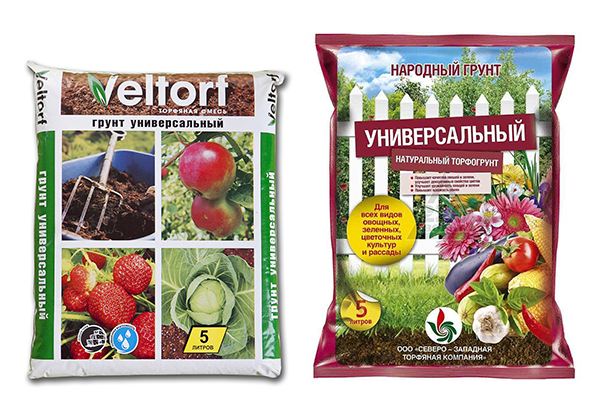
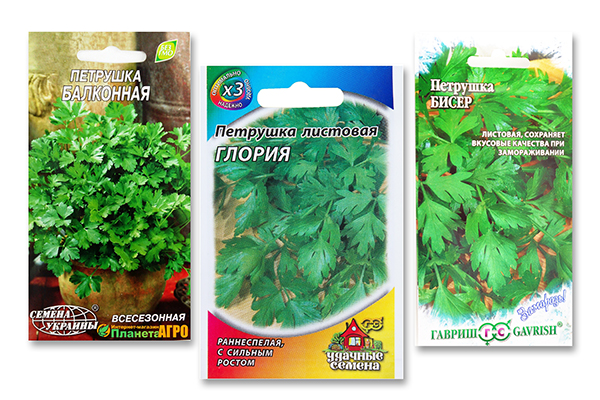
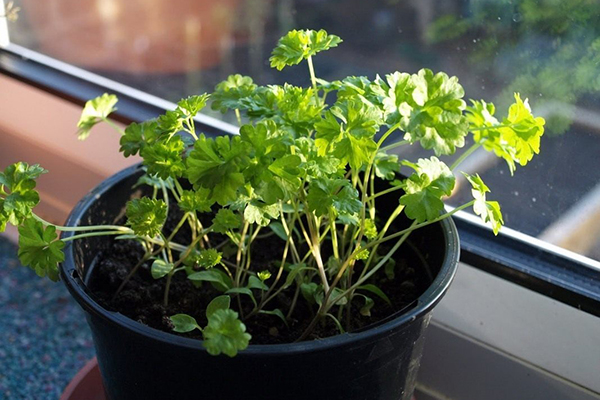
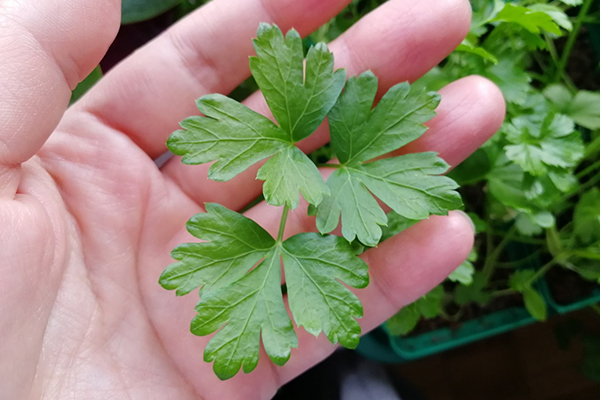
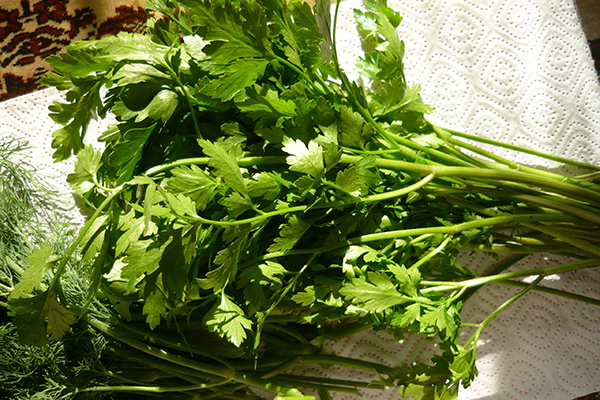
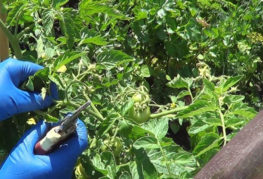
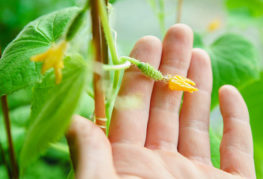
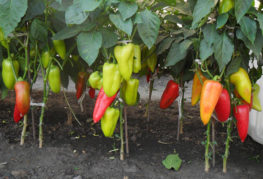

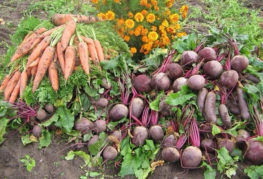
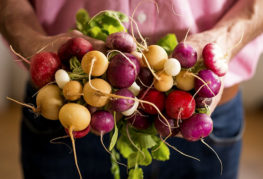
and will be published shortly.